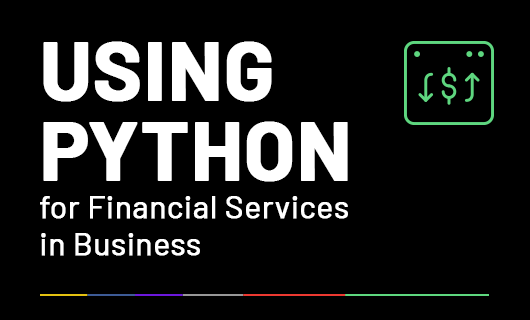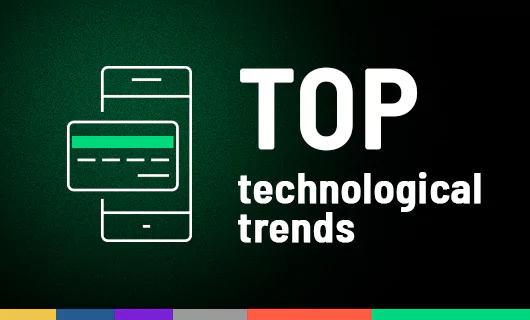Future technologies are pushing into multiple areas of life. Artificial Intelligence and Machine Learning are taking over more and more activities that humans have planned and performed so far. Modern solutions have also penetrated the banking sector, where they improve financial services and risk management. AI and ML tools, with their advanced prediction techniques, can utilize large volumes of data in reduced time, resulting in increased returns and reduced cost.
The Role of Risk Management in the Financial Services Industry
When an investor analyzes and attempts to quantify the potential for losses in an investment and then tries to take appropriate action, they are trying to manage the risk in the organization. In financial institutions, risk management is a process of predicting, understanding, and protecting the organization that reduces the probability of incurring losses.
Defining Financial Risk in Practice
The steady growth of the organization can be jeopardized by internal and external factors. Every business is balancing between monetary policy changes, political changes, and natural calamities. As if that was not enough, financial risk can increase due to contractors who don’t pay on time, or changes in the demand for products or services, among other reasons.
Types of Risk in the Banking Sector and How It Is Managed
There are nine categories of risk for bank supervision purposes. These are price, transaction, credit, interest rate, liquidity, foreign exchange, compliance, reputation, and strategy. These categories are not mutually exclusive because any product or service may expose a bank to multiple risks.
Key Advantages of Machine Learning and Artificial Intelligence in Risk Management Approach
AI shouldn’t scare humans — it certainly won’t steal their jobs. It does quite the opposite. Artificial Intelligence offers the unprecedented opportunity to find competitive advantages for business through improved decision-making backed by accurate data. AI is becoming the perfect assistant because it does repetitive and tedious tasks, such as processing large amounts of data and predicting based on these data packages. AI technologies also help security specialists do their jobs better, faster, and more accurately.
Why AI and Machine Learning for Risk Management?
More and more industries are noticing the potential of Artificial Intelligence to significantly transform a business’s everyday activities. The banking industry, which relies strongly on the power of data, progressively adopts these techniques and has started to draw upon the powerful capabilities of Artificial Intelligence and Machine Learning.
The Game-Changing Role of ML and AI in Risk Management
ML and AI in financial risk management have become associated with improving efficiency and productivity while simultaneously reducing costs. These actions have been possible due to the ability of ML and AI technologies to handle and analyze large volumes of unstructured data at faster speeds with significantly lower degrees of human intervention. The technologies have also enabled financial institutions to decrease the costs of operations, regulations, and compliance.
Key ML and AI Techniques in Banking Risk Management
Artificial Intelligence/Machine Learning models can generate large amounts of accurate data. These data sets enable the successful implementation of strategies and lowering potential losses. The following paragraphs introduce four of the most popular Machine Learning algorithms used in financial risk management.
Supervised Learning for Credit Scoring
Supervised learning is a Machine Learning algorithm that uses a training set to teach a model to receive the desired output. The training dataset includes inputs and correct outputs that allow the model to learn over time. The supervised learning algorithm measures its accuracy through the loss function, adjusting until the error margin has been sufficiently minimized.
Banks use natural language processing and AI in credit risk management to conduct more extensive and detailed analyses of the probability of default and enhance their detection of early warning signs.
Unsupervised Learning for Anomaly Detection
Unsupervised learning uses AI models to identify patterns in unstructured data sets. To detect malicious activity and mitigate risk, banks use machine learning and deep learning technologies to identify anomalies in IT systems and predict attacker behavior, such as target choice or infiltration method.
Reinforcement Learning for Portfolio Management
Banks have been using machine learning models for credit card portfolios for years. Transactions with credit cards present banks with complex data sets on which they can process and train unsupervised learning algorithms. Credit card payment systems have workflow engines that monitor card transactions for fraud detection. Credit card portfolios’ rich transaction history allows banks to separate between specific features present in nonfraudulent and fraudulent transactions.

Business Benefits of Implementing ML and AI in Banking Risk Management
The introduction of solutions offered by ML and AI systems is beneficial not only for customers but, above all, for the organization. What are the key benefits of using technology that relieves people of repetitive, meticulous, and tedious tasks?
Enhanced Decision-Making
How could banks explore the consumers’ needs before introducing the newest investment strategies? For example, they can use AI solutions to analyze Internet and social media activity. With received information, banks can determine the current consumer sentiment, anticipate their behavior, and address any concerns accordingly.
Real-Time Risk Assessment
Banks need real-time AI in financial risk management to perform risk mitigation, stress testing, and intelligent fraud detection. Using these techniques requires optimized frameworks and libraries for AI workloads but significantly reduces the time to execute the process.
Predictive Capabilities
Many banks can stay one step ahead of their customers and competitors thanks to mathematical models using ML and AI tools. The ability to predict outcomes is not limited to risk forecasting but also the study of consumer sentiment (as mentioned earlier), competition activities, or upcoming changes in the global market.
Cost Reduction
Implementing risk management solutions is associated with incurring significant costs. Nevertheless, the benefits a company achieves when using tools and technologies in AI risk management immediately outweigh the costs incurred and generate much higher profits than in the era before their introduction.
Using AI in Credit Risk Management
Banks use AI, ML, and deep learning to assess individual or company credit risk when analyzing every client credit request. With the assistance of neural networks, the above mathematical models use various inputs. The credit risk models analyze personal information, historical behavior data, and existing assets. Crucial are also external factors and trends that may impact the ability to repay. Based on this information, mathematical models produce a personalized risk score influencing a credit decision.
Data Privacy and Security in Banking
AI’s ability to identify potential risks, prioritize them, and suggest solutions is priceless. Artificial Intelligence is undoubtedly changing the way business is done for years to come and ensuring that the future of how we do business is protected and compliant. Therefore, it is worth taking advantage of the possibilities of AI in banking risk management and also in the process of securing data.
Need for Regulatory Compliance
Important and complex activity in the financial sector is complying with national and international regulations. Qualified experts need to review large data sets, analyze multiple variables and receive accurate documentation. Machine learning models automate these activities and ensure they are completed with accuracy. This generates significant savings for banks that can optimize the resources and avoid fines or penalties.
Importance of Quality Data
Every model has analytics capabilities that change with the quality of the input data. Well-prepared input data, which contains a small percentage of garbage and simultaneously is of high didactic quality for AI technologies, will accelerate learning of the risk models. Thanks to this, the entire process will enter a higher level of security much faster, and the organization will save on additional protection.
Future Trends in ML and AI for Financial Risk Management
Artificial Intelligence and Machine Learning will undoubtedly be involved in more and more aspects of risk management in the banking industry, and existing models will become more accurate and smarter. What improvements can we expect soon? To close off this article, let’s try to forecast trends and consider which technologies will have increasing influence on the financial services sector.
The Increasing Role of Deep Learning
Deep learning is receiving increased focus in the banking industry. Unlike machine learning, DL algorithms do not need to be fed with essential criteria within data sets. Instead, the DL models discover features from data independently. To complete this process, they use a neural network. Banks are using deep learning to solve highly complex problems that are too difficult to solve with techniques based on machine learning algorithms.
The Intersection of Blockchain and AI
Merging blockchain and AI can improve clarity and lower the potential impact of fraudulent activity. Blockchain and AI can ease the way through the company’s digitization and implement real-time tracking of offerings from production to delivery. By merging AI-driven predictive analytics with blockchains, companies can get more accurate insights into demand patterns, inventory management optimization, and data-based decisions making.
Interested in learning more about the latest trends in finance? Browse the articles on our blog or get in touch with your questions to keep the conversation going.

Paul Mydlo
Senior Business Development Manager
Associated with the world of technology for over a decade. Paul specializes in supporting international companies in projects related to the development of systems and applications. His main area of focus is American and British companies specializing in the financial services industry, FinTech, and banking. Together with Scalo engineers, he provides advisory in developing and transforming software solutions.





